Eugenics, Border Wars & Population Control: The Tanton Network
Nearly everything Americans hear about the U.S.-Mexico border is wrong, and it’s very likely because of one relatively small but extremely well-funded and influential group of American racists.
On July 5, 2022, a group of officials in Texas held a curious press conference. It consisted of a handful of politicians from across the state praying and insisting, using openly white supremacist rhetoric about immigrant “hordes” and “invasions”, making terrifying claims, without a shred of evidence, that the United States was living through a disastrous attack on its very integrity at the hands of refugees and asylum seekers attempting to cross into the country.
Misleading statements about the security of the border have been escalating for years. What was remarkable was the brazenness of the extremist, nativist framing that the Texas politicians were pushing, and the fact that their rhetoric had absolutely no relationship with reality. “We’re under attack like Pearl Harbor!” Texas Lieutenant Governor Dan Patrick told Fox News, as though bombs were raining down on him at that very moment.
This line of false and nakedly racist rhetoric, comparing immigrants and refugees to attackers and diseases, is no accident. One could argue that it was the very reason for the press conference’s existence in the first place. The increasingly blatant bigotry in immigration discourse is the culmination of decades of targeted influence by an assortment of largely unknown groups known as the Tanton network.
The Tanton network is, as its name suggests, a criss-crossing mesh of politicians, lobbyists, think tanks, non-governmental organizations, pundits legitimized by op-eds in major newspapers, and billionaire money.
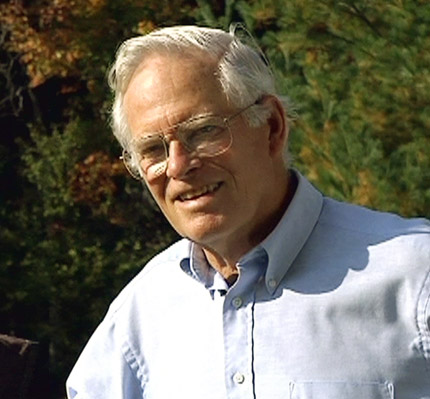
This network is named after its creator, John Tanton, a retired Michigan ophthalmologist and birdwatcher by the time he discovered the spectre of overpopulation, courtesy of entomologist Paul R. Ehrlich’s book “The Population Bomb“, which ushered in decades of policies of coercive sterilization and worse, worldwide. The spectre is kept alive by a network of disinformation purveyors whose only goal is to, in its founder’s own words, maintain a ruling white majority in the United States.
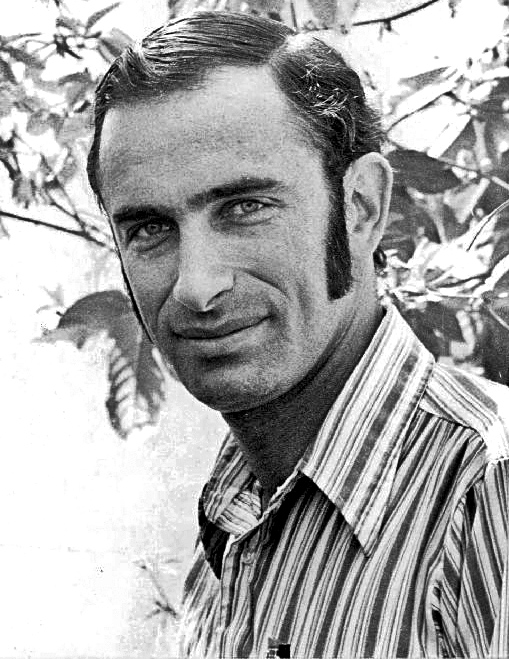
Ehrlich went on to sit on the advisory board of Tanton’s flagship organization, the Federation for American Immigration Reform (FAIR), for many years; he was also a founder of another Tanton-linked group, Zero Population Growth. “We must have population control at home, hopefully through a system of incentives and penalties, but by compulsion if voluntary methods fail,” Ehrlich wrote. But he didn’t stop there. “We must use our political power,” he also wrote, “to push other countries into… population control.”
Tanton’s obsession was initially with overpopulation as a whole – he felt that there needed to simply be fewer people on the planet. He preached for efforts such as contraception and abortion (he and his wife Mary Lou were frequent donors to groups like Planned Parenthood and the Sierra Club) in order to bring progressives around to what he perceived as an overwhelming need for population control.
As so often happens, however, Tanton quickly decided that only some populations might need controlling — those he personally found the most questionable. He quickly changed tactics to settle on immigration restriction after realizing that eugenics might not be palatable to most Americans in the decades following the revelations about Nazi atrocities during World War II. Tanton ultimately decided that “population control” should be inflicted more on certain people than others, and advocated for a “Euro-American majority, and a clear one at that.” And thus was the eugenics movement reborn, couched as “immigration restriction.”
Tanton reportedly loved to sit at his typewriter and tap out long letters to various groups asking for funding. In fact, much of Tanton’s available correspondence appears to be a nearly inexhaustible supply of fundraising letters to as many groups as he could.
Wealthy Backers for Tanton’s Cause
John Tanton’s letters often detailed a plan that he came to call “passive eugenics,” which consists of ideas such as coerced sterilization, restricting childbearing ages, and anti-immigrant disinformation campaigns. He even published an essay in 1975 called “The Case for Passive Eugenics.” In this way, Tanton apparently discovered that he shared many ideals with the richest people in the country— his first and primary funder, Cordelia Scaife May, believed that immigration should be sharply limited in the United States.
May, whom Tanton affectionately called “Cordy” in letters, began life with progressive leanings, but ended up detesting most humans, particularly immigrants and people of color, and she had the inherited wealth to go a good long way toward bringing about her particular vision for the world. She wrote to a cousin in the 1980s in language that by now is likely familiar to all Americans:
“When we hear of immigrants, we instinctively think of Mexicans because they are the most numerous and given the greatest press coverage. In truth, we are being invaded on all fronts. Filipinos are pouring into Hawaii. Almost anyone from the Caribbean countries and Eastern South America who can make it to the Virgin Islands or Puerto Rico can eventually make it to the U.S. mainland. Orientals and Indians come across the long stretches of unmanned border we share with Canada.
“When the Mariel boat people arrived in Florida from Cuba, much was made of the possibly deleterious impact they might have on American life… criminal habits, radical political thought, exotic diseases, neighborhood disruption, etc., …but no reporter, columnist, nor commentator cited their most dangerous contribution of all: a birth rate far higher than that of our native population. They breed like hamsters.”
– Cordelia Scaife May
May and her foundation effectively financed Tanton’s efforts and inroads for years. The warm, lucrative relationship between Tanton and “Cordy” continued until her apparent suicide in 2005. By 2013, May’s Pittsburgh-based Colcom Foundation was the single biggest bankroller of the anti-immigration movement. (May also contributed funds to white nationalist group VDARE and paid to republish Jean Raspail’s work of deeply racist fanfiction, “The Camp of the Saints”, which former Trump adviser Steve Bannon calls his favorite book.)
But the family connections didn’t end with Cordelia May. Her brother, Richard Mellon Scaife, a major early funder and board trustee of The Heritage Foundation, gave his blessing to Tanton’s efforts through the Colcom Foundation.
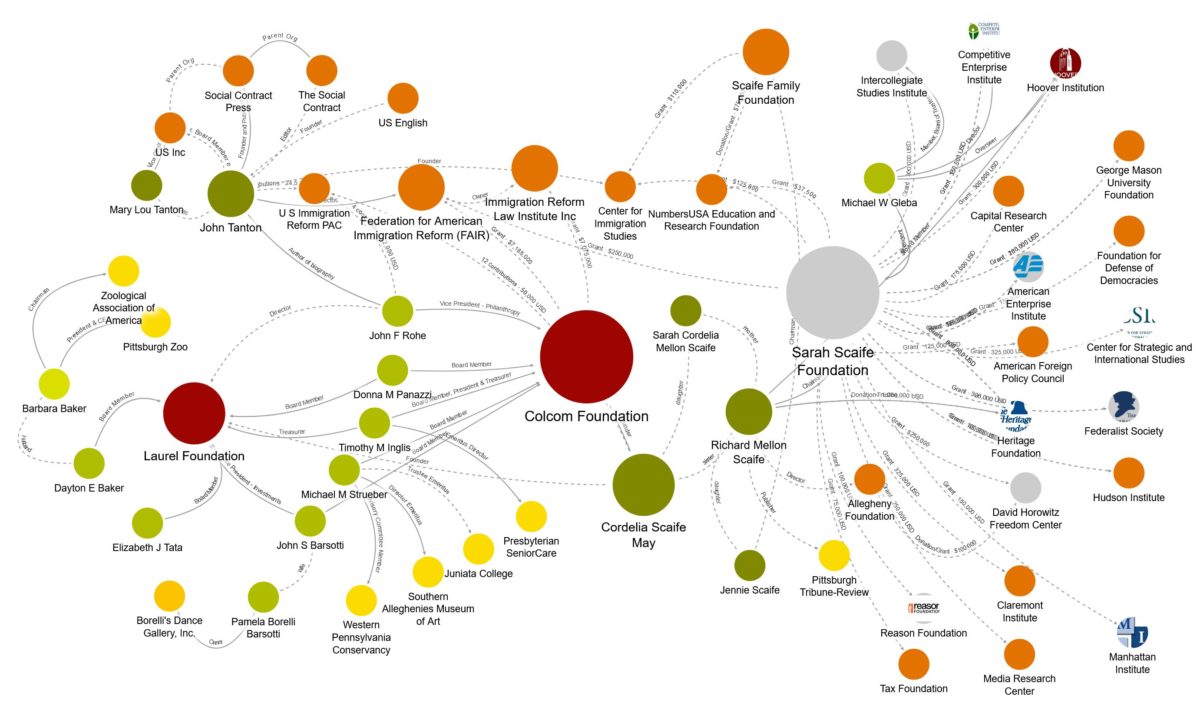
Colcom’s vice president of philanthropy, John Rohe, wrote a glowing biography about the Tantons called “Mary Lou and John Tanton: A Journey into American Conservation.” (Rohe also wrote something called “A Bicentennial Malthusian Essay: Conservation, Population and the Indifference to Limits.”)
Their efforts paid massive dividends. In 1986, American immigration law was changed for the far more draconian, even as it offered asylum to millions already within the United States, with IRCA, the Immigration Reform and Control Act.
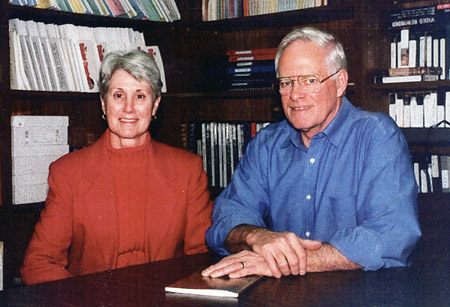
By the 1990s, misleading “overpopulation” narratives were accepted by the American public at large, with national magazines blaring terrifying narratives about all the evils that overpopulation could bring, playing directly into national debates over immigration and overcrowding. These were the results of extensive efforts by the Tanton network, as Tanton himself makes clear in an “oral history” with Dan Stein (who still heads FAIR) in 1994.
“I agree with you that special interests are misunderstood. One reason special interest groups go up is because the system is so complicated that you have to, as Pat Noonan says ‘Focus, Focus, Focus,’ if you hope to get anything done. I used to tell people that FAIR’s role in the 1986 Immigration Act cost us eight years and eight million dollars for whatever it was we were able to accomplish in that particular act.“
– John Tanton
The duo also detail their working relationship with then-Senator Alan K. Simpson (R-Wyoming), listed as the bill’s author, and how they were able to leverage that into greater visibility:
“Well, the organization was not well-known at that point in time. It was well-known enough to be known to the editors of The New York Times, and there were some letters to the editor there. It was well-known enough to have retained a high- powered lobbying firm , and it was well-known enough, thanks in part to Senator Simpson’s alliance with FAIR early on, to secure occasional appearances on MacNeil/Lehrer NewsHour and a couple here and there, maybe the Today Show.“
– Dan Stein
Unicorn Riot’s #Icebreaker series includes leaked ICE & INS operations manuals that show how federal immigration agents enforce the 1986 Immigration Reform and Control Act (IRCA).

Tanton Network Advances in the Trump Era
By 2015, when Donald Trump first announced that he planned to run for U.S. President, these groups were well known throughout the political and media ecosystem. Indeed, its relative obscurity was due to the fact that until Trump’s openly nativist campaign, news organizations by and large had begun to understand that the network of nonprofits and lobbying groups was not representing its true aims.
“The anti-immigrant movement’s talking points and tactics during the current immigration debate are remarkably similar to the ones used during the last major push for immigration reform in 2007,” reads one representative article published by the Anti-Defamation League in 2013. “Reestablishing and buttressing front groups is an example of the movement’s repeat tactics.”
But by 2016, the ‘Overton window’ of acceptable discourse was sliding rapidly to the far right, thanks to concerted efforts from the Tanton network’s disinformation purveyors and their “objective” enablers in the popular media. Soon, the Federation for American Immigration Reform, the Center for Immigration Studies, and other affiliated groups and organizations that had once been recognized as serving up nothing more than white supremacist fare, such as The Social Contract Press, were regularly quoted in news stories, tapped by pundits, invited onto televised panels, all without revealing their true affiliations and goals, such as seeding white supremacist conspiracy theories such as “the Great Replacement” into the mainstream.
This nearly immediate acquiescence to disinformation purveyors by the national press paved the way for Tanton network operatives to be brought into the federal government en masse by the Trump administration. A 2016 Pittsburgh Post-Gazette story shows many links between the Trump campaign and Scaife money. Many of those named in the report are likely familiar to Americans, such as former transportation secretary Elaine Chao, former education secretary Betsy Devos, billionaires Peter Thiel and Rebekah Mercer, and more.
By 2017, many of those same Tanton affiliates were either embedded in or directly influencing Trump’s Department of Homeland Security, enacting their agenda mainly against immigrant women and children. Key figures included USCIS Ombudsman Julie Kirchner, fresh off a years-long stint at the Federation for American Immigration Reform, Ken Cuccinelli in the Department of Homeland Security, whose legal stunts included a 2008 attempt to overturn birthright citizenship, and Kris Kobach, a pet lawyer for the Federation for American Immigration Reform’s legal wing, the Immigration Reform Law Institute, or IRLI.
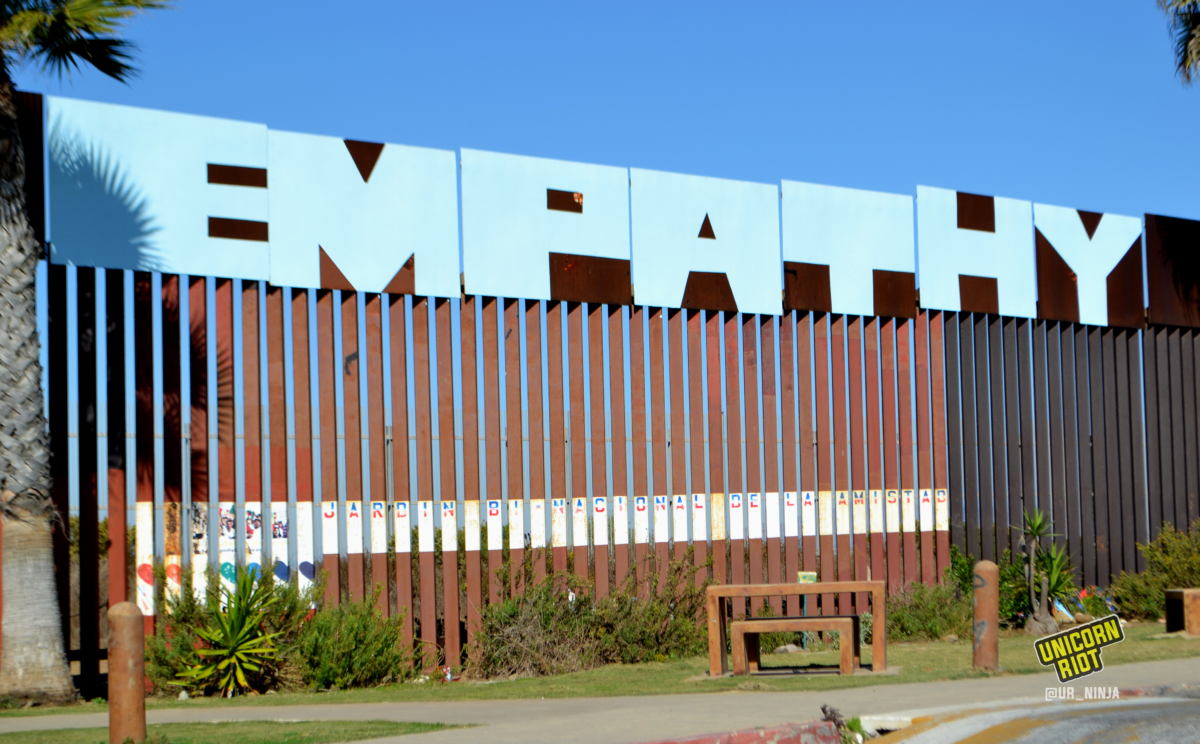
It was under their watch that family separations and coerced or forced sterilizations took place en masse in the United States following the stated goals and aims of the Tanton network.
But now, although Trump and his administration are out of power, there has been no real pushback or consequence for these acts which are clearly classified as acts of genocide under the Geneva Convention. Instead, Joe Biden’s administration, constrained by Trump appointed judges, hostile Republicans, and political “norms,” has continued much of Trump’s policies at the border.
In the absence of legal or social consequences for any of these acts or the rhetoric that inevitably accompanies and justifies such acts, the Tanton network has once again upped its game as catastrophic climate change looms, giving authoritarian leaders the excuses they need to shut down international points of entry. They no longer seem to feel constrained to wrap their nativism in pseudoscience and dogwhistles, but instead push warlike language of “hordes” and “invasion” in what appears to be an effort to spark stochastic violence — acts of terror whose likelihood can be statistically but not individually predicted, encouraged by signaling aggression against specific groups of people.
But while the Tanton network is skilled at nuisance lawsuits, weaponized rhetoric, and fundraising, they are also a relatively small group of people who are highly vulnerable to counter messaging and losing their positions of power. Their narratives are closed loops that can be derailed with transparency and fact-based reporting.
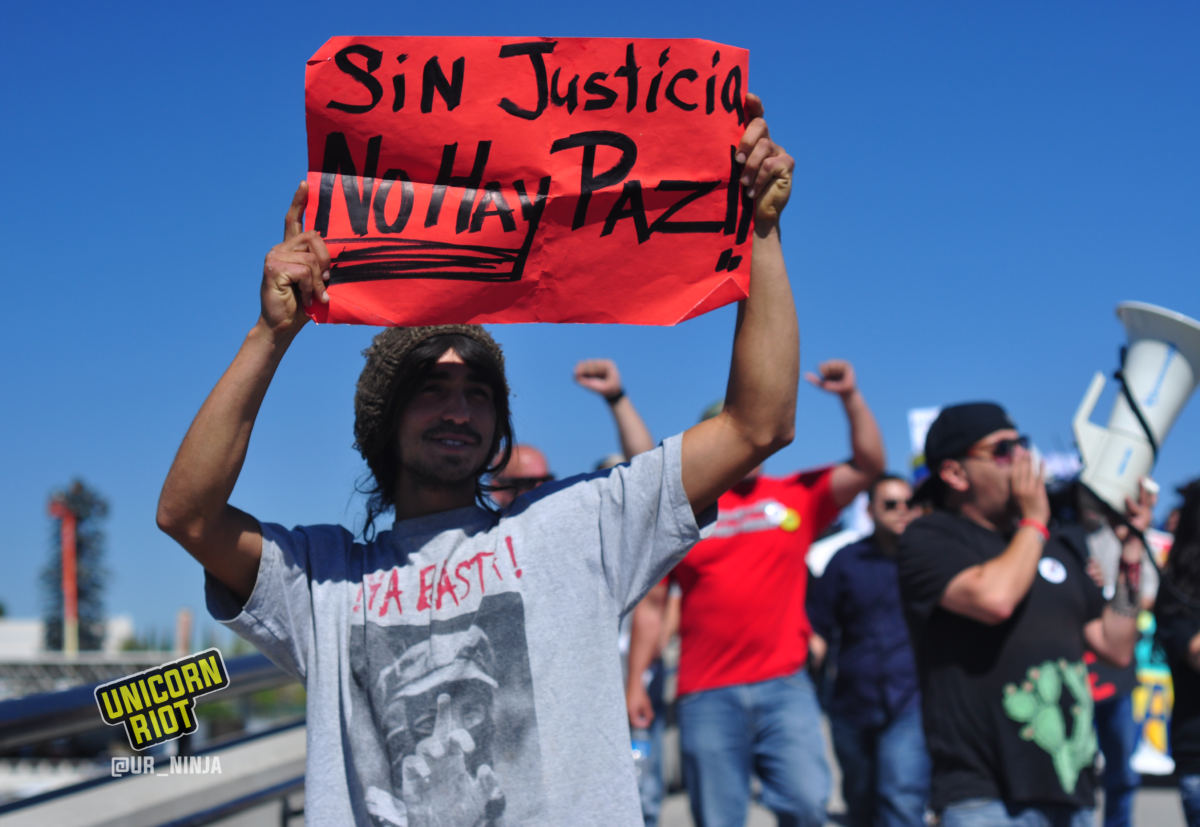
Private Papers Sought in Michigan
Hassan Ahmad, a Virginia based immigration lawyer, has spearheaded an ongoing transparency effort around John Tanton’s private papers, which he donated to the University of Michigan with the caveat that some not be unsealed until 2035. Ahmad and supporters argue that these papers contain a wealth of knowledge about Tanton’s plans and contacts that, in light of the Trump presidency and all its corrosive effects on American immigration, are squarely in the public interest.
As of 2022, the case over Tanton’s papers has been dragging on for five years. Many of its twists and turns make little sense, Ahmad said, noting that at least three of the now-sealed boxes had once been open to the public. “They could have stopped a long time ago if they wanted to,” he said. “If Tanton had really wanted to keep these papers secret, there were other ways to do it. He didn’t do it.” The University of Michigan is arguing that opening the sealed boxes of papers would constitute an invasion of privacy.
The boxes of paperwork would bring new life to journalists and researchers working to shed light on John Tanton’s destructive legacy. Over time, link decay, changes in editorial direction, and paywalls have increasingly interfered with efforts to track down background information on the Tanton network and its allies, at the same time that transparency and equality have become crucial in the age of hybrid attacks and catastrophic climate change, particularly around the future of migration and immigration. As the Tanton network’s influence and funding continues to grow, so do the calls to uncover the truth about the history, and the future, of the United States’ immigration policies.
Brooke Binkowski is a longtime breaking news and border reporter turned debunker and managing editor for TruthOrFiction.com. You can find her on Twitter at @brooklynmarie.
Please consider a tax-deductible donation to help sustain our horizontally-organized, non-profit media organization:

For more border & immigration coverage see our stories on ‘No More Deaths’, and sanctuary movements:
Unicorn Riot's No More Deaths Coverage:
- Crisis: Borderlands - March 14, 2017
- Humanitarian Aid Camp Raided By US Border Patrol - June 15, 2017
- Humanitarian Arrested After Group Releases Report Implicating US Border Patrol - January 23, 2018
- Migrant Aid Workers Targeted by Border Agencies in Retaliation, Documents Suggest - March 22, 2019
Unicorn Riot's Coverage of the Sanctuary Movement and U.S. Immigration:
- Vigil at GEO ICE Detention Center in Aurora Spreads Love to Immigrants (February 10, 2025)
- Coloradans Rally at State Capitol to Support Immigrants and Protest Mass Deportations (February 8, 2025)
- University of Utah Students Protest Against ICE and Police on Campus (February 6, 2025)
- Calls For a Migrant Labor Strike Grow on Social Media (December 28, 2024)
- ICE is Training Civilians to Conduct Violent Raids on Immigrants (October 31, 2024)
- Nearly 100 Migrant Families Evicted from Aurora, CO ‘Slumlord’ Apartments (August 13, 2024)
- Dozens of Migrant Families Face Eviction in Aurora, CO with Less Than One Week’s Notice (August 8, 2024)
- Protests Erupt Across Florida as Senate Bill 1718 Goes Into Effect (July 2, 2023)
- Protests Against Anti-Immigrant Laws to Continue (June 25, 2023)
- Minnesota ‘Driver’s Licenses For All’ Bill a National Model For Data Privacy Protections, Advocates Say (April 20, 2023)
- Eugenics, Border Wars & Population Control: The Tanton Network (August 22, 2022)
- Reports of Forced Sterilizations in ICE Facility Spark Protest (September 22, 2020)
- GEO Group’s ICE Jail Lies to Immigration Lawyer, Attempts Unlawful Deportation (July 2, 2020)
- Racial Justice Teach-in at Abolish ICE Camp in Aurora CO (June 13, 2020)
- Another Immigrant Claims Sanctuary from Deportation in Colorado (Feb. 14, 2020)
- Immigrant Rights Advocates Rally in Response to Rotten Food Given to Detainees (Jan. 6, 2020)
- Ingrid Encalada Latorre Pardoned After 2+ Years Claiming Sanctuary (Dec. 28, 2019)
- The Price to Oversee ICE: 200+ Protesters March in Aurora Suburb Home to GEO Group ICE Warden (Sep. 30, 2019)
- Twin Cities Jewish Community Blockades ICE Building, 27 Cited (Aug. 2, 2019)
- Passions Run High at ‘Close the Concentration Camps’ Protest (July 22, 2019)
- Hundreds in CO Plan Rally to ‘Close the Concentration Camps’ (July 12, 2019)
- Thousands March in Minneapolis to Stop Separating Families (June 30, 2019)
- Jeanette Vizguerra’s U-Visa Denied While in Sanctuary Second Time (June 27, 2019)
- CO Community Gathers Outside GEO ICE Facility on Longest Day of Year (June 21, 2019)
- Occupy ICE Denver Camps Outside GEO ICE Detention Center (Oct. 29, 2018)
- #OccupyICE Movement Grows Momentum in Colorado (Aug. 6, 2018)
- ICE Occupation Emerges at Denver Field Office (July 30, 2018)
- Philadelphia Reduces Police Help To ICE; ‘Occupy ICE’ Camp Moves (July 30, 2018)
- Protesters Occupy Philadelphia ICE Office (July 2, 2018)
- Protests Target ICE Contractor General Dynamics (June 29, 2018)
- Ninth Annual CO Love Knows No Borders, No Walls Vigil (Feb. 5, 2018)
- November Vigil at GEO Group ICE Detention Center in CO (Nov. 6, 2017)
- Ingrid Encalada Latorre Returns to Sanctuary; Four Claim Sanctuary in CO (Oct. 27, 2017)
- Ingrid Encalada Latorre Leaves Sanctuary After Six Months; Granted Temporary Stay (May 27, 2017)
- Indonesian Undocumented Immigrant Detained at ICE Check-In (May 24, 2017)
- Jeanette Vizguerra, Among Others, Celebrate Victories Against ICE Deportation Attempts (May 17, 2017)
- Sanctuary Movement Leader, Arturo Hernandez Garcia, Detained by ICE While at Work (April 30, 2017)
- Jeanette Vizguerra Named One of Time’s 100 Most Influential People as She Remains in Sanctuary (April 22, 2017)
- Crisis: Borderlands (March 14, 2017)
- Arizona Anti-ICE Demo Meets Arrests and Chemical Agents (Feb. 17, 2017)
- Deportations Begin Under Trump’s Regime (Feb. 14, 2017)
- Love Knows No BAN No Walls Vigil at GEO ICE Detention Center (Feb. 8, 2017)


